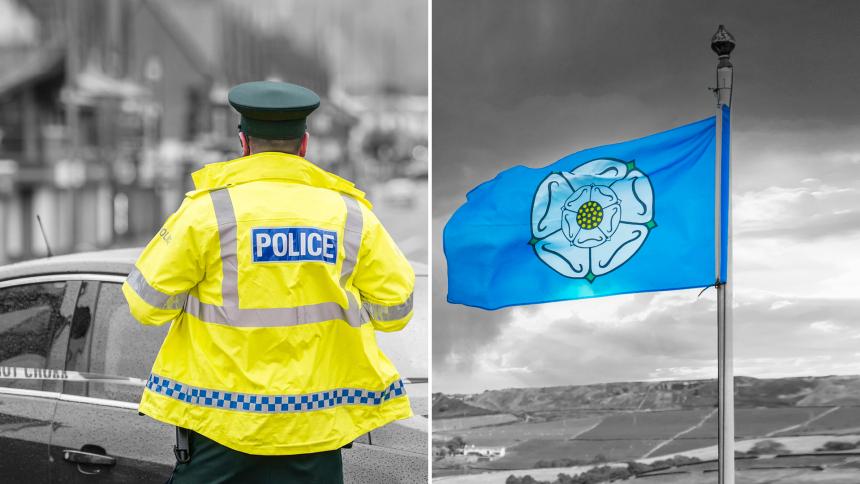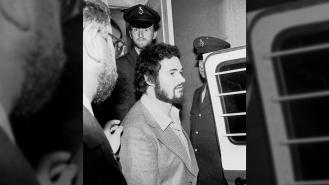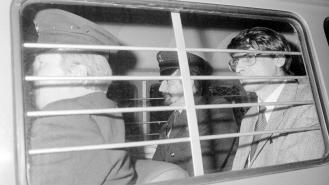
Was there a second Yorkshire Ripper?
It’s one of Britain’s most high-profile crimes and most shocking cases. It led to the country's largest and most expensive ever manhunt. Yet for years, police simply couldn’t catch the perpetrator.
The Yorkshire Ripper case stumped West Yorkshire police, consumed the media and frightened women in the area for years. Looking back at it now, with hindsight, it seems relatively straightforward. It’s almost difficult to see why the investigation took so long, went down so many dead ends and came up short so many times.
Yet, if we consider more than just the official printed narrative, we can see some of its complexity. Furthermore, if we peer into the story even harder, we might just catch a glimpse of something that may blow the entire case wide open.
We need to ask one very simple question here: Was there a second Yorkshire Ripper?
The ‘official’ Ripper story as we know it
Between 1975 and 1980, someone was driving around the Leeds and Bradford area, picking up women and brutally murdering them. Thirteen women lost their lives in this unthinkable way, while a further seven survived their attacks but faced serious injury and a life of trauma.
The killer used hammers, knives and sharpened screwdrivers, killing with an assured ferocity that earned him his gruesome nickname. Despite a far-ranging and dogged investigation by West Yorkshire Police, the killer was not identified or arrested until January 1981.
When the justice system finally caught, tried, convicted and sentenced the man who was responsible for the murders, they discovered that he was someone they had questioned many, many times. A lorry-driving, former gravedigging, paranoid schizophrenic who claimed that God told him to kill women.
Peter Sutcliffe
We all know, by now, the identity of The Yorkshire Ripper. Born in June 1946, Peter William Sutcliffe’s face is burned into the popular consciousness. Tall, dark, bearded and with a coiffured mane of jet black hair, his is a distinctive visage.
Despite his psychiatric diagnosis, which the jury later discarded, and testimonies from four experts, Sutcliffe was deemed mentally fit enough to stand trial and serve time in a normal prison. Once inside, however, he became a target for extremely violent attacks by other inmates and his mental wellbeing deteriorated. Three years into his sentence he was moved from Parkhurst to the country’s most famous high-security psychiatric hospital, Broadmoor. He remained there until his death in 2020 at the age of 74.
No one denies that Peter Sutcliffe was The Yorkshire Ripper. Sutcliffe himself never did, at least not in 1981. What has been suggested, however, is that he was not solely responsible for all thirteen murders. Now, of course, high-profile serial killer cases are easy prey for scurrilous rumours; ones which can sometimes be damaging to the legacy of the case and the families of the victims. This theory, however, could have some legitimacy.
Two blood types
Forensic evidence suggests, to some degree, that the thirteen victims may very well have been the work of two separate killers. Ron Warren was the deputy chairman of the West Yorkshire Police Authority at the time of Sutcliffe's arrest. Decades later he told the Yorkshire Post:
‘There were definitely two murderers involved in the thirteen. It was well known in the operations room that there had to be two, because of the blood evidence. I don't know how it was all reconciled, but I do believe Sutcliffe was found guilty of more murders than he could possibly have committed. It was a very inefficient inquiry, there were things that were difficult to explain away, and I suppose the police were more interested in getting it all wrapped up than in getting at the whole truth.’
An article in The Sunday Times
It’s believed that many people involved in the investigation shared Oldfield’s view, mainly based on the blood/DNA evidence. Some of The Ripper’s victims were found to have DNA material on or in them which pointed strongly to the killer having the type B ‘secretor’ blood type. While Sutcliffe was type B, he was a non-secretor. Essentially, the murderer’s DNA evidence in some of the murders didn’t match Sutcliffe’s profile.
Why Sutcliffe may have been ‘eliminated’ so many times
Between 1977 and 1980, Peter Sutcliffe was interviewed in connection with the case a staggering nine times.
It’s to be expected that at some point during those interviews, West Yorkshire Police should have stumbled across some proof or vital information. While an amount of systemic and ground-level incompetence can be to blame for them missing or ignoring the clues, there was something else at play: Peter Sutcliffe just didn’t fit the evidence they had.
Sutcliffe’s later testimonies and recounting of the murders bore this out. He had deep, personal knowledge of some of the murders - enough to suggest, without much doubt, that he was responsible. For other murders though, especially the ones where evidence was much less clear as to his involvement, he knew no more that was printed in the newspapers or given to him during his police interviews.
A dubious confession?
By the time of Sutcliffe’s arrest and subsequent confession to all thirteen murders, the public’s view of the handling of the case was not exactly positive. The reputations of every senior police officer connected to the case had become seriously tarnished.
When Sutcliffe came back in handcuffs in 1981 - this time with a fair bit of incriminating evidence - police were very much of the opinion that not only was he guilty, but that they would get their man. And get him they did. Whether they did so in an entirely ethical way has been debated in some quarters in the decades since.
Leading the interview process was Detective Superintendent Richard Holland. His remit was clear: get a full confession on all thirteen murders. That mission was promptly achieved. Good police work by DSI Holland? It could well have been.
The argument against that would likely cite Holland’s role in the conviction of Stefan Kiszko for the murder of eleven-year-old Lesley Molseed in the mid-1970s. It’s a matter of public fact that Holland withheld vital DNA evidence in order to put the intellectually-disabled Kiszko in the frame. Kiszko was wrongfully convicted and spent sixteen years in prison. After the man’s appeal and acquittal, Holland was charged with 'doing acts tending to pervert the course of justice'.
Was Sutcliffe fed info and coerced into confessing to all thirteen murders, when he may not have been responsible for them all? That’s one of the very cornerstones of the ‘Two Rippers’ theory.
Was there a copycat at work?
If we are to lend the ‘Two Rippers’ theory credence, we’re presented with a few options as to what really went on. They are:
- The two men worked together as a team
- There were two entirely separate men working independently of one another, by some form of ghoulish coincidence
- There were two entirely separate men working independently of one another, but where one inspired the other to kill - essentially making the second murderer a copycat killer
In the controversial book The Real Yorkshire Ripper by the Irish author Noel O’Gara, the copycat killer theory is posited. He examines the fact that it appears the thirteen murders show two quite distinct MOs, suggesting two killers. He pours over other facts and pieces of evidence and identifies another man as ‘The Real Yorkshire Ripper’, who he claims killed ten of the victims. Sutcliffe, he puts forward, copied the killer and carried out the other three murders.
It should be said that the book exists somewhere outside of the mainstream of true crime non-fiction and has never been backed up further by any authorities. That’s not to say that it might not be on to something. At the same time, it’s difficult to fully get behind this specific theory too enthusiastically.
Still, the ‘Two Rippers’ theory is certainly an intriguing one.










